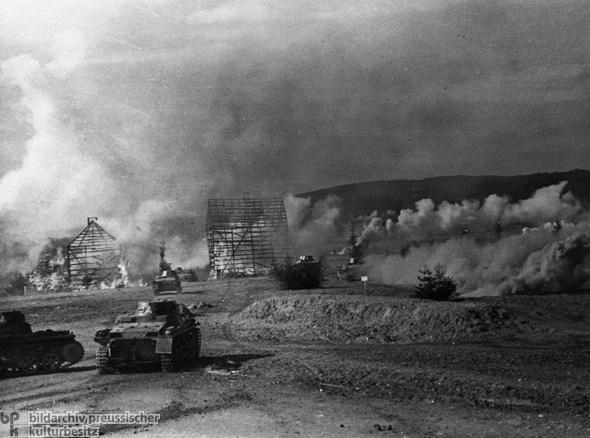













INTRODUCTION | DOCUMENTS | IMAGES | MAPS | EDITOR
|
A few days after Hitler took office, he declared at a cabinet meeting that the military rearmament of Germany would have the highest priority in the state budget. All domestic and economic policy measures instituted by the new regime would be subordinate to the larger goal of military preparedness. Among other means, the government planned to finance armaments expenditures through a growing budget deficit, which would be paid back after the war was over. The government gave the armed forces full control over their armaments budgets as well as preferential access to raw materials. About 2,800 companies received direct contracts for the production of weapons and war matériel. Hitler’s rearmament efforts violated the disarmament articles of the Versailles Treaty and thus were initially carried out more or less in secret. The Krupp firm, for instance, camouflaged its mass production of tanks as the production of tractors. But the growing domestic and international strength of the Nazi dictatorship soon prompted the regime to make an open break with the provisions of the Versailles Treaty. On March 9, 1935, Hermann Göring revealed the existence of the German air force. A week later, on March 16, Hitler announced the reintroduction of general military service. Thus the Nazi government had unilaterally lifted the Versailles Treaty's military regulations. Photo by Arthur Grimm.
© Bildarchiv Preußischer Kulturbesitz / Arthur Grimm |
 print version
print version return to image list
return to image list previous image
previous image
